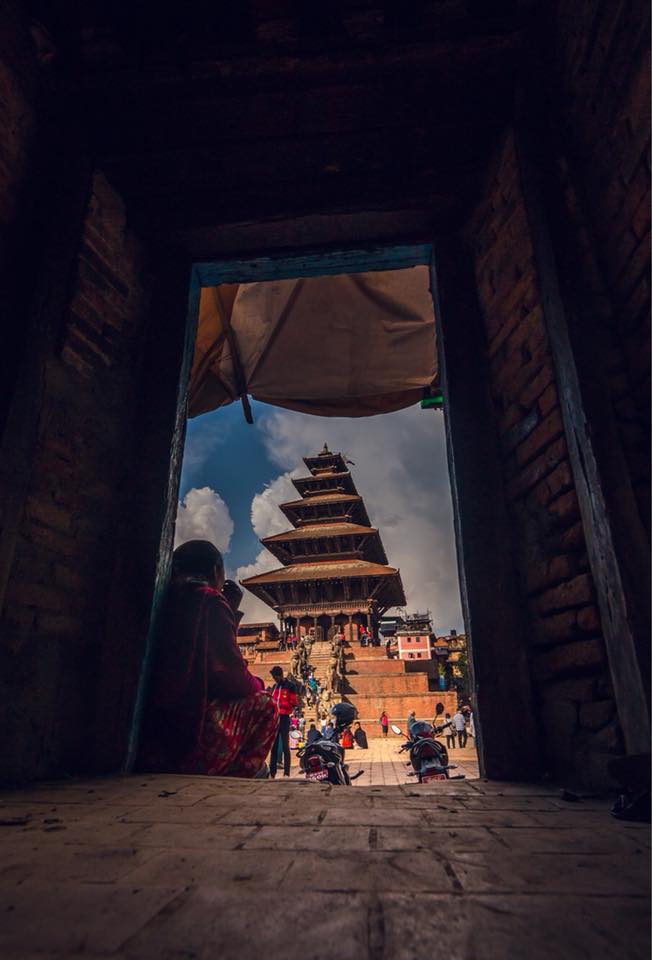Chyamasingha
Walking could be fun if you choose to walk in such a place where every step amazes you. Isn’t it? Well, I personally prefer this kind of walk where the very next step excites you, and what is left behind permanently fits in your memory.
Right at 3 p.m. I left the office to have a walk.
Actually, a heritage walk.
I along with my friend, who is a photographer, and dai, who purpose that walk reached Chyamasingha gate in a while. While my photographer friend was capturing those beautiful ankles of Chyamasingha gate, we were discussing the meaning of that name, Chayamasingha.
Well, if you belong to a Newa family and pretty well understand the Newari language, then you could easily guess the meaning of it. Even if you are not, it’s okay, the Chyamasingha means the eight lions. But there is no lion sculptured in that gate.
However, there indeed is an eighth image of lions in that area. Guessing where could it be?
To the eastern side of the gate, after crossing the road you could see a pond on your southern space and those eight images of lions, two in each direction of that quadrangle pond. Seeing the use of the name, Chyamasingha, we could guess that the pond is quite antique.
There is a school named Bageshwori Secondary School on its east whereas a bus stop on the south, allaying with various bookstores and shops. (You could find buses going to different routes from there, especially Kalanki and Ratnapark. It seems like the oldest bus park or stops in Bhaktapur.)
Heading back towards the gate reminded us about the Lohahiti of Chyamasingha. Thus, we went over there too. It belongs right behind the pond, on the northern side. But there was an artificial tap attached to its mouth, I guess water still flows from there. There was also a Shivalinga near that conduit.
It is quite normal to find Shivalinga and an image of such a small stupa near this kinda stone conduit. Also, I get the idea of writing about Bhagirath right from here. The image of Bhagirath which we can see underneath each stone spout really has an amazing story.
You can read the story about Bhagiratha, right here.
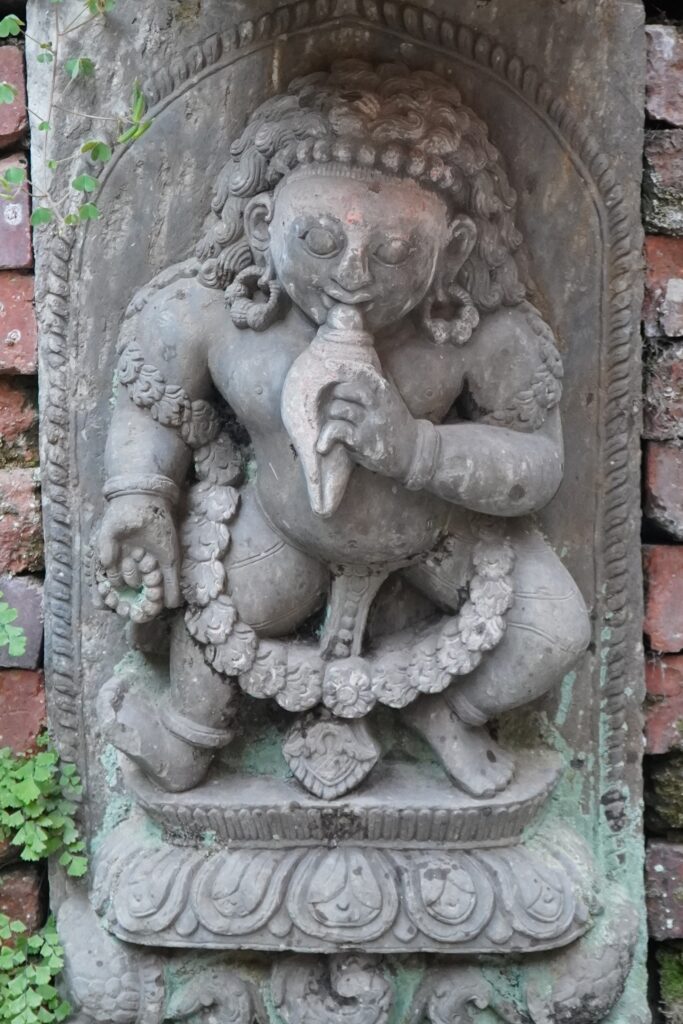
After crossing the road, we started to walk through the dense market of Chyamasingha. While passing the market, we again stopped at another stone spout, named Tulutulu Hiti.
I know the name is quite funny but it is worthful for the tap. The name of it means slow but continuous pace. And you can witness that the water flows there 24/7.
Moving ahead leads us towards Suryamadhi Chowk and, from there, the Aadipadma Vihar. I wonder if anyone besides the locals even knows about the place. Even I was unaware of the place until I had to study the Vihars of Bhaktapur.
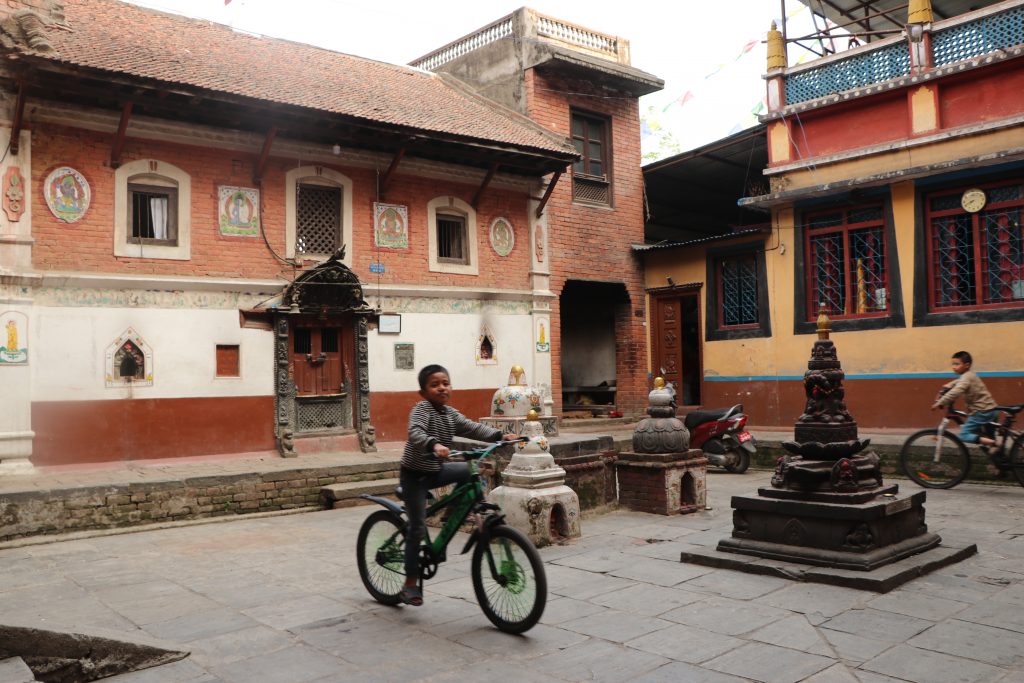
The vihar indeed was the oldest one. After roaming for a little, we then returned to the Suryamadhi Chowk and enter the Wakupati Narayan temple from the back door. The temple premises was like a totally different place from the Suryamadhi chowk.
The temple also has its own significance and as if Bhagirath, it also has an interesting story.
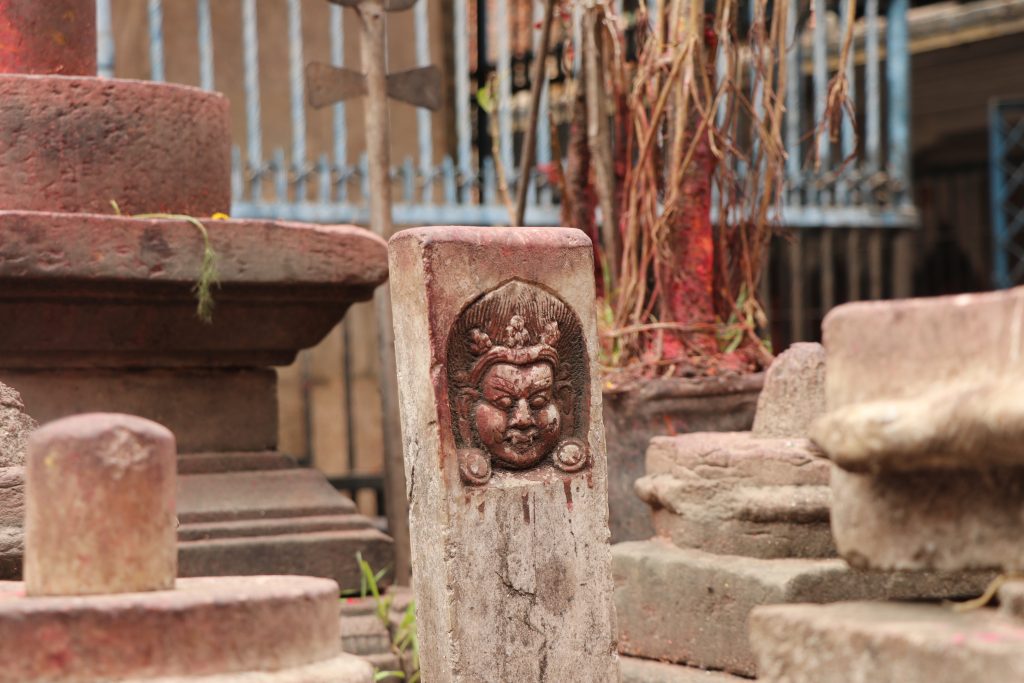
After taking some photographs of the surroundings, we move ahead toward the Dattatraya temple. Guess what, there were these many gullies in the distance that we may have another separate blog about those gullies.
Dattatraya Square
Dattatraya square is an exceptionally beautiful square, always filled with the locals walking around, and well surrounded by the temples and Pujari Matahas. Can you believe that only in Dattatraya Square, there are eight Pujari Mathas? And two of them are well-known the Woodcarving Museum and the Brass and Bronze Museum.
Read about the pujari maths of Dattatraya

Well, locals do not call this area, Dattatraya Square. Instead, they call it Tachapal. When we reached there, it was already past 3. So, there was no chance that we could enter the museum. So, we directly head toward the stone conduit, which is located right behind the Bhimsen temple, passing the Dattatraya temple.
The water was still draining from the tap. And, that was quite surprising seeing a streaming tap in between that dense settlement.
Well then, we move toward Salan Ganesh temple from there. It is situated on the northern side of the Dattatraya temple. The specialty of the temple was the idol of Lord Ganesh was based on the ground. Nearby, there is a pond named Salan Ganesh pokhari and an Agam chhen (actually the dyo chhen of Salan Ganesh ). The building is one of the best examples of exquisite woodcarvings in Bhaktapur.
From there, we headed toward Naagpohari of Bhaktapur. In front of which, there is Basuki Ghar, another exceptionally beautiful architecture of Bhaktapur. And, let me tell you that it is the personal residence of Mr. Rabindra Puri, one of the biggest personalities of Bhaktapur.
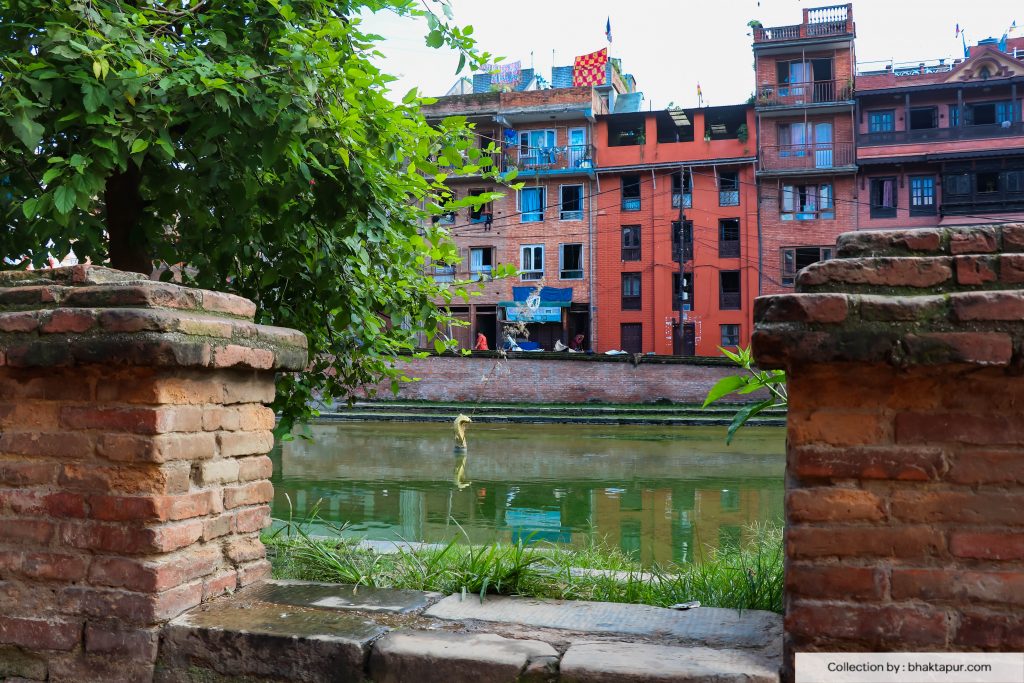

From there, we head straight to the west, entering a Galli, again. From there, another straightforward way to the west, Tuchimala. We went all the way to Tuchimala to see an incomplete building, the Agam chhen of the Awal clan. And what is special about the architecture is the artistic window.
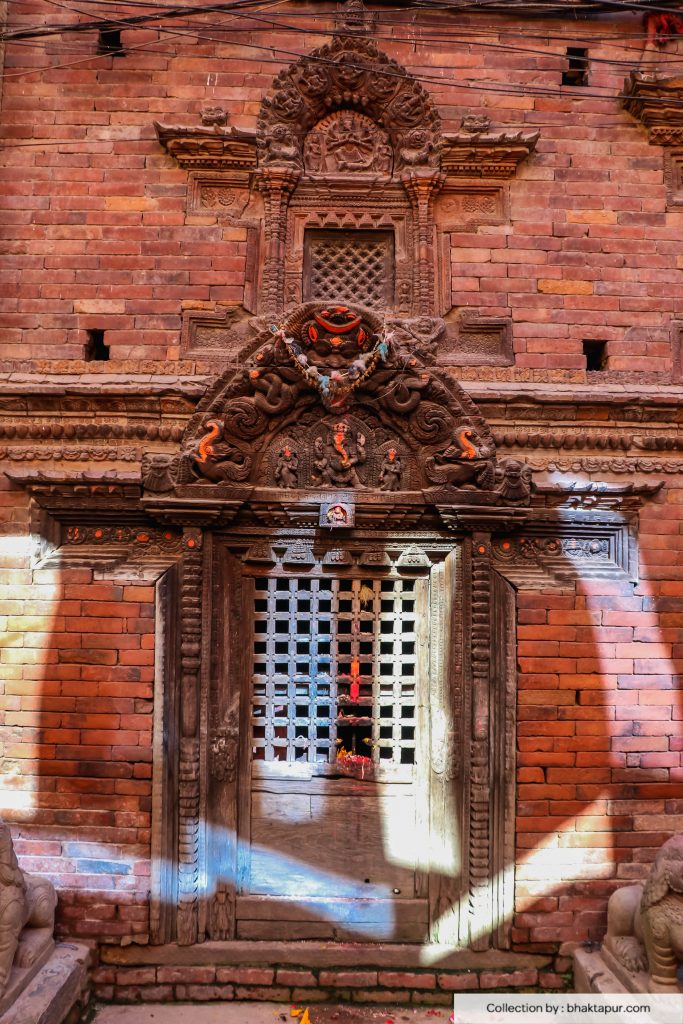
The Awal clans, who are well known for building houses, of course, had to make their own dhyo chhen quite exceptional, isn’t it?
And, as expected, it is extraordinary. Well, you have to take a left turn from the well and pati before reaching the Chuma Ganesh temple to reach the building. From there, we then walked straight on the bricked paved road that led us to Sukuldhoka.
Sukuldhoka
Here, we reached Sukuldhoka without using the main market road. Instead, we choose the narrow and quite confusing gullies to reach there, which looking back seems worth it too. Then, we went towards Kwachhen, the nearby area of Taumadhi Square. But before reaching there, we again, sneak into one of the unrecognized Gulli.
It was there, after crossing the road to Chasukhel, in between the houses and shops, a narrow way leading toward some minor temple. Continuing the path lead us to another courtyard and the backdoor of a coffee shop.
We enter the coffee shop from the background and then directly head toward the Nyatapola temple. But, we were not there for the Nyatapola temple this time, we were there to witness the “Purna Kalash” at Bhairavanath temple.
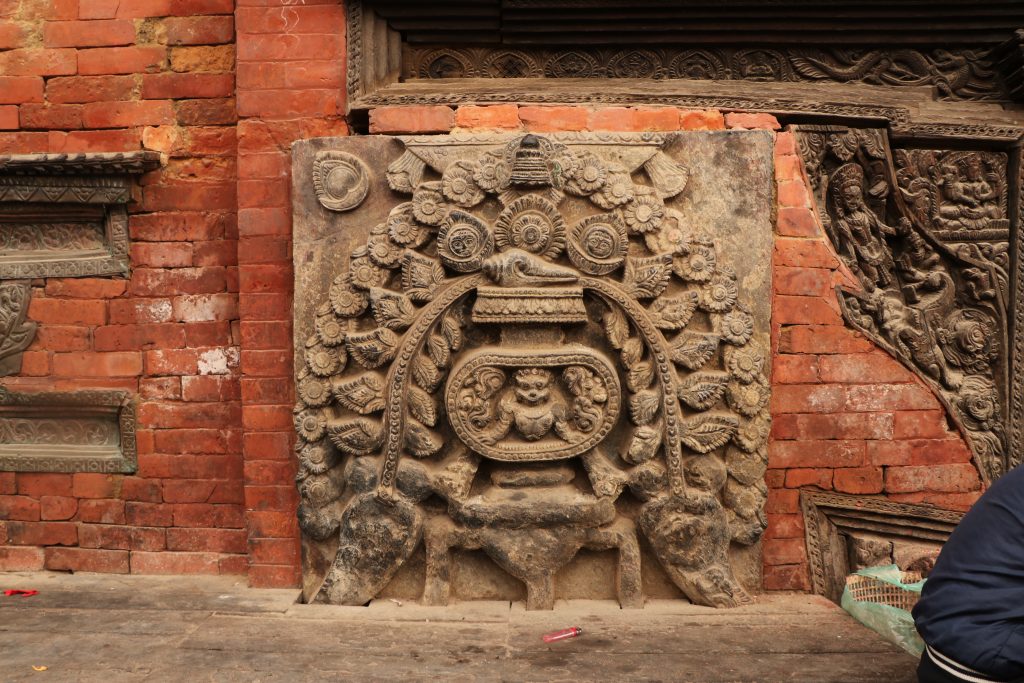
As expected, there was this Purna Kalash but I felt it was a little similar to the face of Bhairava too, that we have been witnessing till today. Well, that took my attention at first. Then we went to the nearby Lunhiti, a stone conduit. The specialty of the conduit was that it has Navagraha engraved on the northern wall of it, which is said to be the only carving of Navagraha in the entire Nagara.
Read about the statues of Nava graha at Tumadhi Square.

And, from there, we head toward Til Madhava Narayan temple. As we are doing all day long, even here, we enter from the backdoor. Well, that was kinda funny though. Til Madhava Narayan is also a well-known temple of Bhaktapur. I somewhere find it called Tilam Madhava Narayan too. But the place more than the temple reminds me of something else.
I had my Ihi ceremony done over there, Well, of course, back then I did not know about the temple and its significance. But I do now. The temple courtyard has other minor temples too. And there is this pillar-like temple where you can witness all the avatars of Lord Vishnu. It is such a masterpiece.
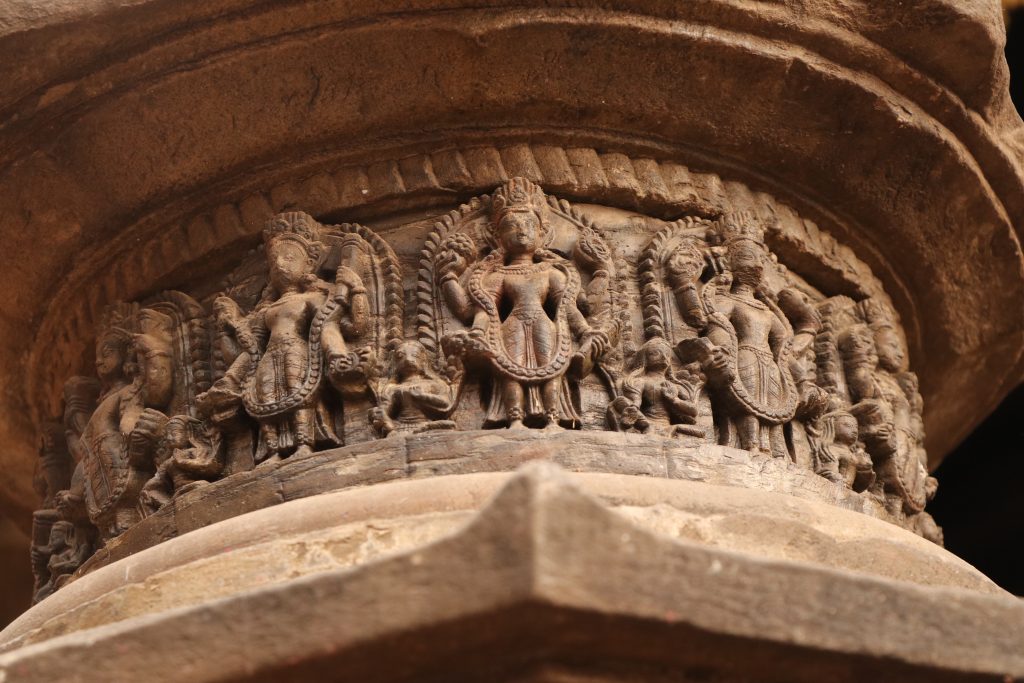
The locals sitting around there said that there is a tortoise on the base and upon which there is Baraha who is holding the earth in his arms. And, on top of that, there are avatars of Lord Vishnu.
From there, you can clearly see the Nyatapola, by way. After spending some time, we then separated ways, I went the home, and the others did too.
